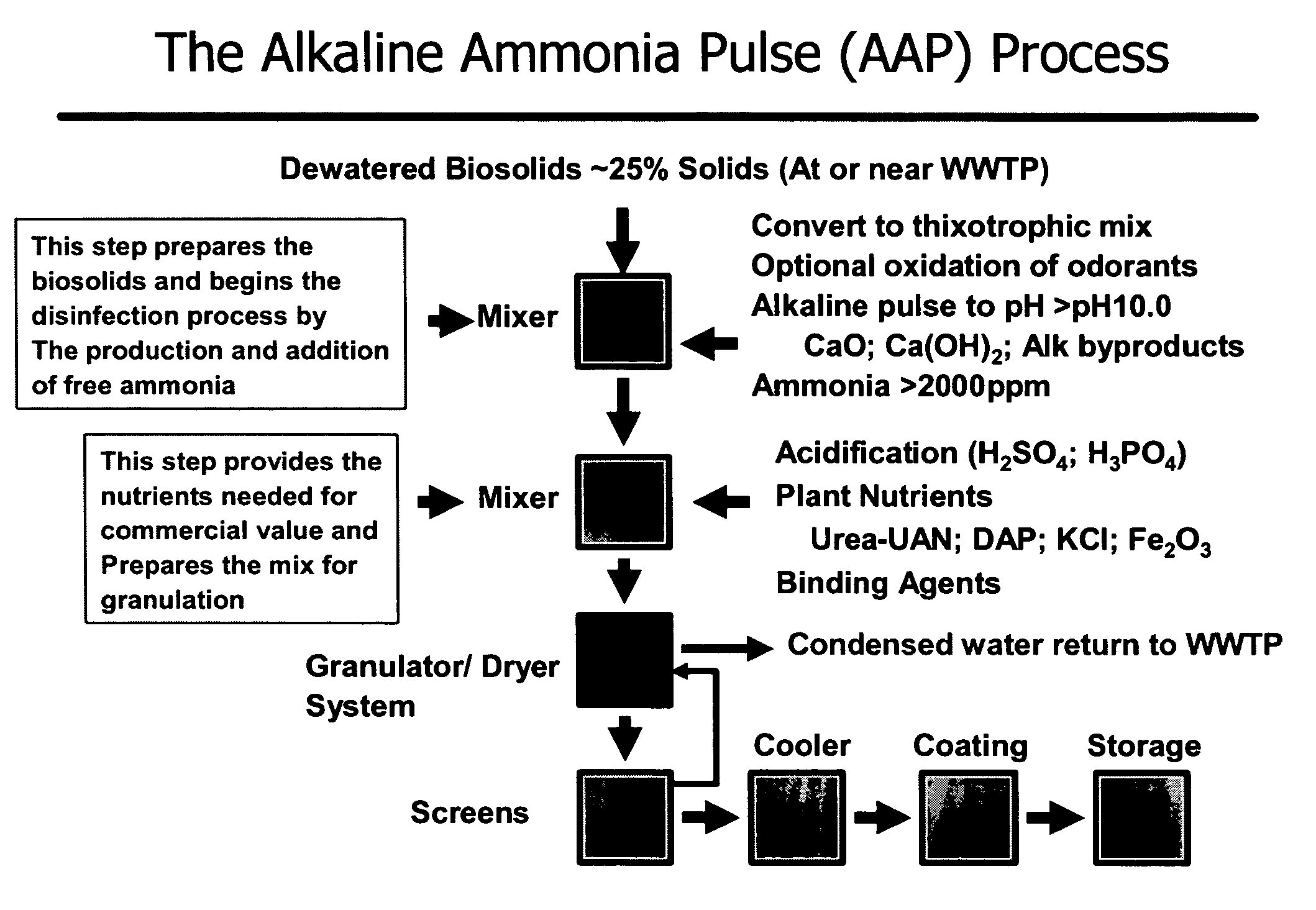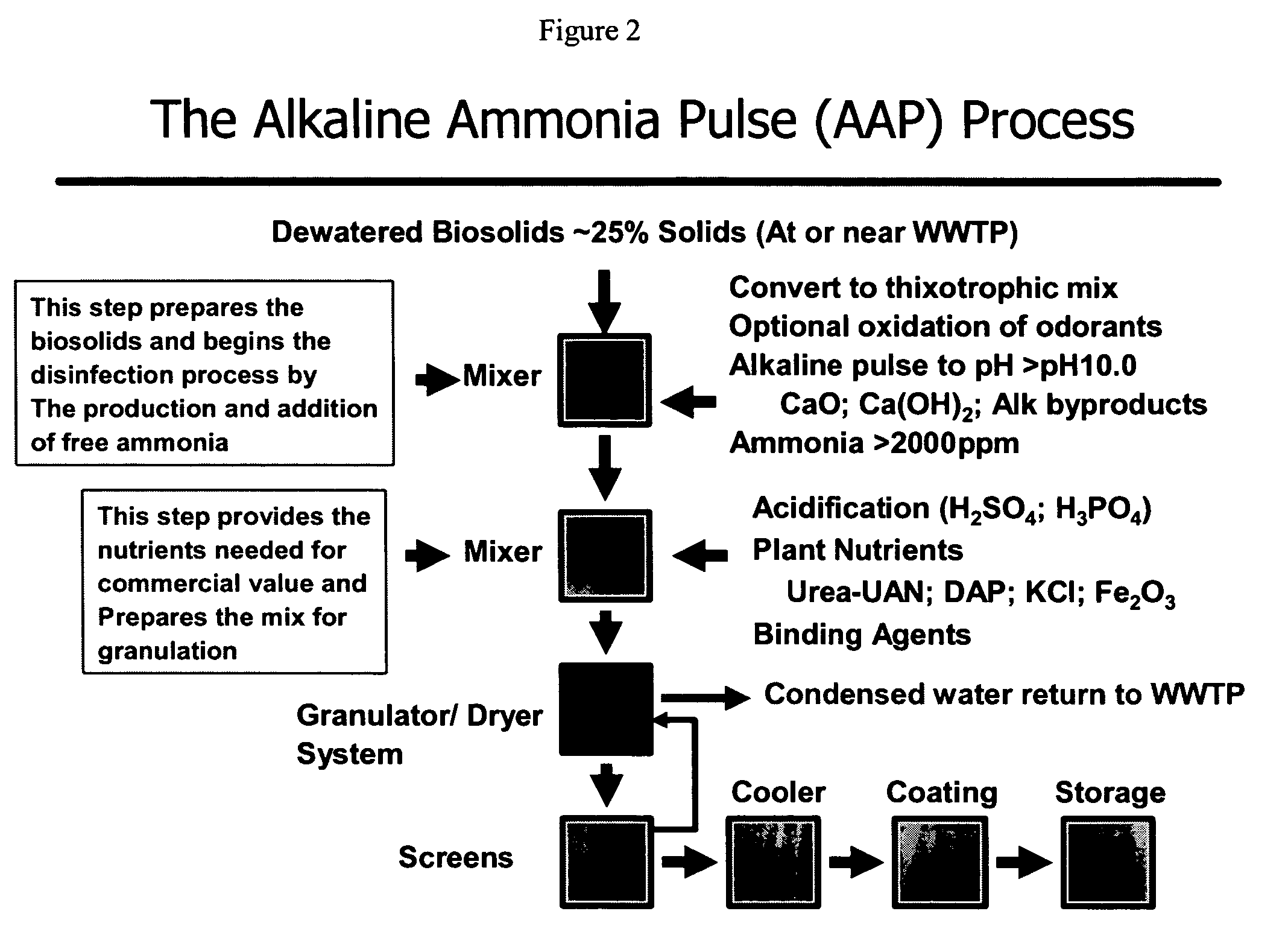Organic containing sludge to fertilizer alkaline conversion process
a technology of organic sludge and fertilizer, which is applied in the field of organic sludge to fertilizer alkaline conversion process, can solve the problems of limited usefulness and marketability of commercial agriculture, low fertilizer nutrient level, and limited distance of materials, so as to reduce odor, increase plant nutrient content, and strong antimicrobial
- Summary
- Abstract
- Description
- Claims
- Application Information
AI Technical Summary
Benefits of technology
Problems solved by technology
Method used
Image
Examples
Embodiment Construction
[0019]As embodied and broadly described herein, the present invention is directed to systems, devices and methods for treating organic containing-sludges and producing an inorganically-enhanced bioorganic fertilizer.
[0020]The “inorganically-enhanced bioorganic fertilizer” is produced in a method of processing organic containing sludges to a microbially safe condition simultaneously with combining such sludges with plant nutrients containing nitrogen, phosphate, potassium along with sulfur and iron.
[0021]It has been surprisingly discovered that by chemically modifying organic containing sludges to fit the needs of nitrogen, phosphorus and / or potassium fertilizer requirements by reacting them with hot, molten or oxidative compounds of nitrogen, phosphate and other plant nutrients like potassium, sulfur, iron, and / or calcium creates a unique and valuable product. The results are a product with at least: a) enhanced commercial valuation, b) reduced odor; and, c) increased nitrogen, phos...
PUM
| Property | Measurement | Unit |
|---|---|---|
| pH | aaaaa | aaaaa |
| pH | aaaaa | aaaaa |
| pH | aaaaa | aaaaa |
Abstract
Description
Claims
Application Information
 Login to View More
Login to View More - R&D
- Intellectual Property
- Life Sciences
- Materials
- Tech Scout
- Unparalleled Data Quality
- Higher Quality Content
- 60% Fewer Hallucinations
Browse by: Latest US Patents, China's latest patents, Technical Efficacy Thesaurus, Application Domain, Technology Topic, Popular Technical Reports.
© 2025 PatSnap. All rights reserved.Legal|Privacy policy|Modern Slavery Act Transparency Statement|Sitemap|About US| Contact US: help@patsnap.com



